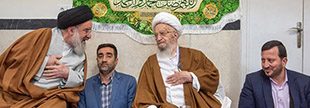In 1979, the Islamic Revolution dramatically altered the country’s political landscape, forcing many families, including the Hakimzadehs, to flee. This abrupt move back to the United States presented significant challenges, but it also opened new opportunities for Hakimzadeh. His experiences during this period of upheaval likely instilled in him a profound sense of resilience and adaptability, traits that would serve him well in his future military career .Kavon Hakimzadeh enlisted in the United States Navy in 1987, a decision that marked the beginning of a distinguished military career. He earned a Navy ROTC scholarship to Carnegie Mellon University, where he demonstrated academic and leadership prowess. Upon commissioning, Hakimzadeh became a flight officer on the E-2 Hawkeye, an airborne early warning aircraft essential for naval operations.
Hakimzadeh’s initial sea tours were with the Tigertails, where he honed his skills and gained invaluable experience. His subsequent assignments included roles with Carrier Strike Group Eight as Flag Lieutenant, VAW-123 Screwtops as a department head, and VAW-126 Seahawks as executive officer and commanding officer. These tours involved multiple deployments aboard some of the US Navy’s most prominent aircraft carriers, such as the USS Enterprise (CVN-65), USS Dwight D. Eisenhower (CVN-69), USS Theodore Roosevelt (CVN-71), and USS Harry S. Truman (CVN-75).

